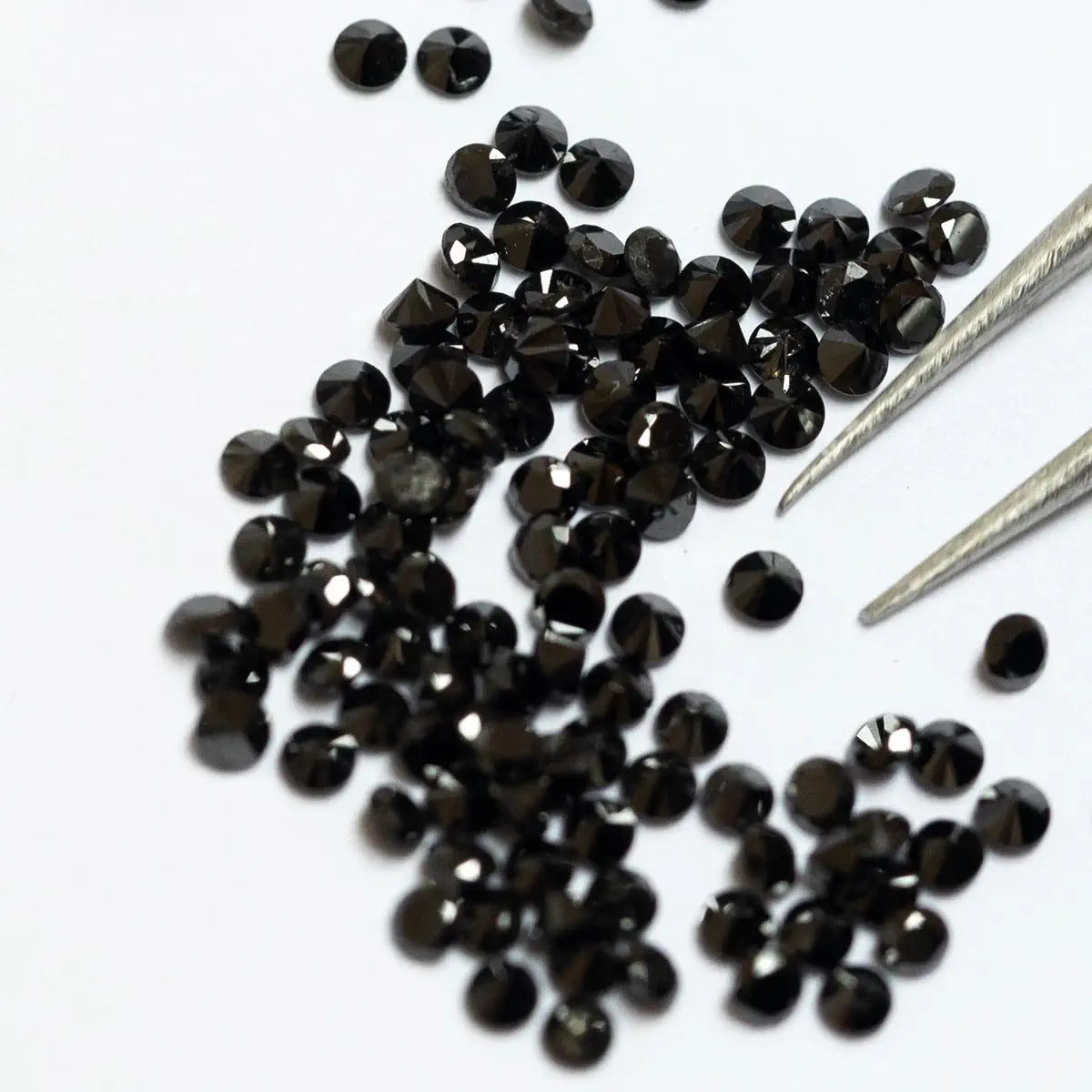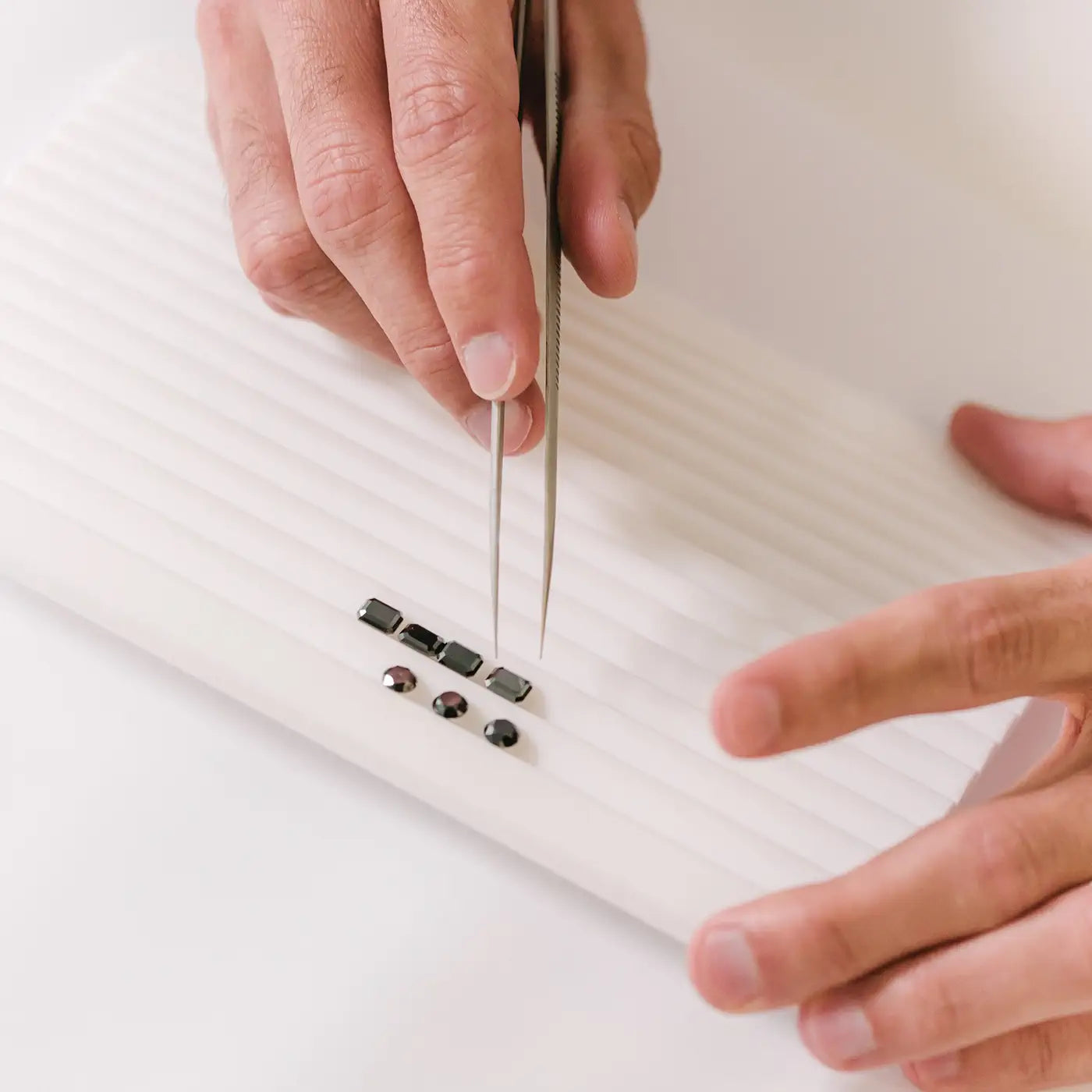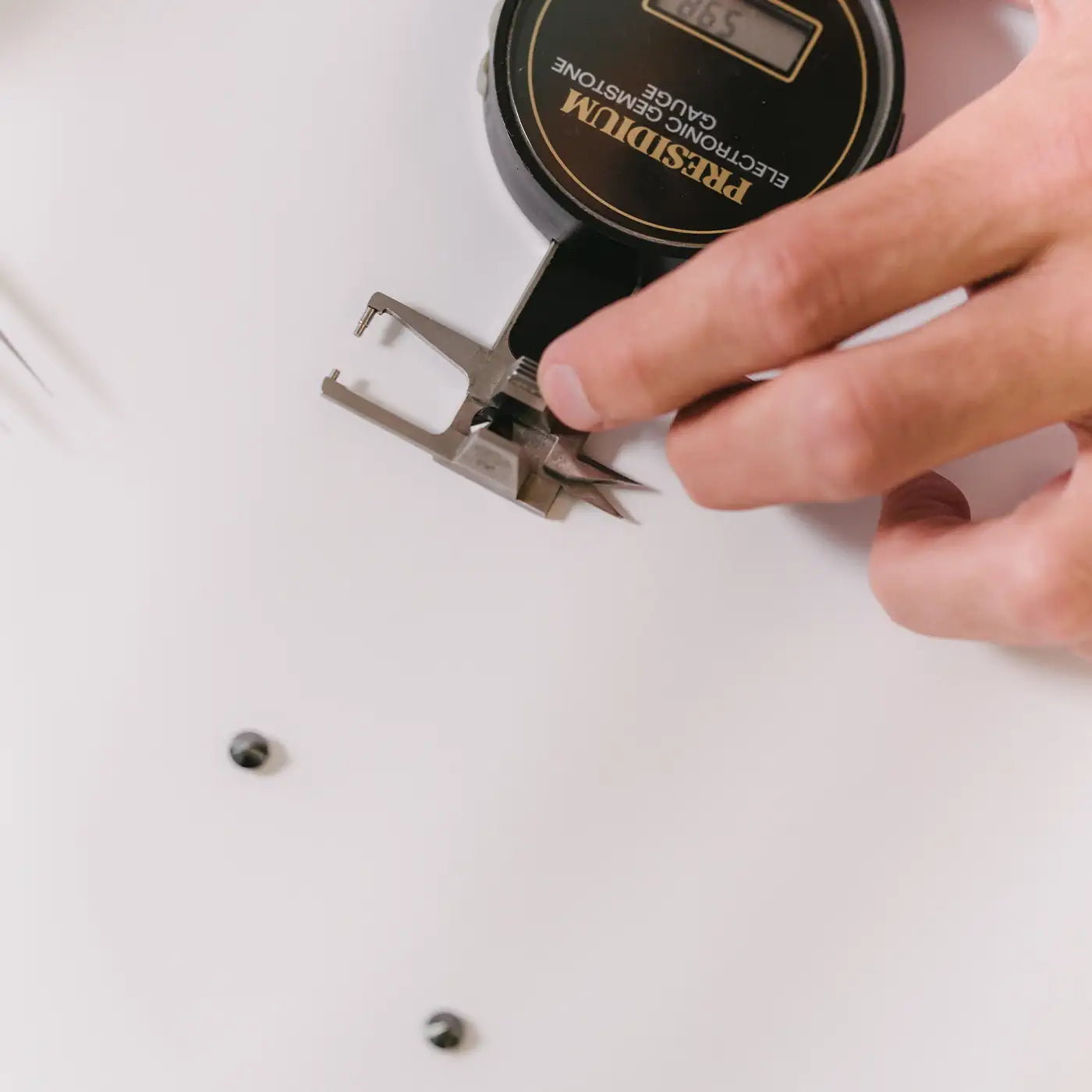UNDERSTANDING BLACK DIAMONDS
Black diamonds offer a bold, modern look with a unique character unlike traditional white or colored diamonds. Their deep, opaque color makes them a striking choice for bracelet designs — either as a contrast to white diamonds or as a full black diamond statement piece. Understanding how they are evaluated will help you choose a black diamond tennis bracelet that fits both your style and quality expectations.

What Are Black Diamonds?
Black diamonds are real diamonds, but their appearance and structure differ from white diamonds. Their dark color is caused by dense inclusions or graphite content, which absorb light and give them an opaque, black appearance.
There are two types of black diamonds used in jewelry:
- Natural black diamonds: Formed naturally with internal features that give them their dark color. Rare and typically more valuable.
Treated black diamonds: Lower-quality white or gray diamonds that are heat- or irradiation-treated to achieve a solid black appearance. These are more common and affordable.

Color
Unlike white or colored diamonds, black diamonds are opaque and do not sparkle in the same way. Their appeal lies in their uniform, glossy finish and bold visual impact.
In bracelets, consistency in color and polish is key — the best black diamonds have a smooth, even surface with a high-quality jet-black luster.

Clarity
Clarity grading does not apply to black diamonds in the traditional sense, as they are heavily included by nature and not transparent.
Instead, what matters is:
- Surface quality: Look for stones with minimal surface blemishes or pits.
Consistency: For bracelets, stones should be well-matched in opacity, tone, and texture.

Cut
Because black diamonds are harder and more brittle than white diamonds, cutting them requires special care. They are often cut in simpler shapes that maintain structural integrity.
Common cuts for black diamonds in bracelets include:
- Round
- Rose cut (a flat-bottomed cut with a faceted dome)
- Cushion or emerald cut, depending on design
For bracelets, the cut should provide symmetry, consistency in shape and size, and a smooth, polished surface.
Carat Weight
Black diamonds are denser than white diamonds and typically appear smaller for the same carat weight.
- Bracelets are often made with multiple small black diamonds matched in size.
- Total carat weight (ctw) is used to describe the full weight of all stones in the bracelet
Larger individual black diamonds are less common in bracelets, but may be featured in statement or center-stone designs.
Treatment Disclosure
Most commercial black diamonds are treated to enhance or create their dark color — typically through heat or irradiation.
- Treated black diamonds are stable and suitable for jewelry, but the treatment should always be disclosed.
- Natural untreated black diamonds are rarer and priced accordingly.
Always ask whether the black diamonds in your bracelet are natural or treated, especially for higher-end purchases.
Certification
Black diamonds used in bracelets are rarely certified, especially when small stones are used throughout the design.
For larger stones or investment-grade pieces, certificates from GIA or other reputable labs may confirm whether the diamond is natural and whether any treatments were applied.
Due to the nature of black diamonds, certificates typically focus on origin and authenticity, rather than color or clarity grading.

Final Thoughts
When selecting a black diamond bracelet, focus on uniformity of color, surface quality, and overall craftsmanship. Confirm whether the stones are natural or treated, and if you're investing in a high-value piece, ask about certification.
Black diamond bracelets offer a bold, contemporary aesthetic and can pair beautifully with both casual and formal styles.